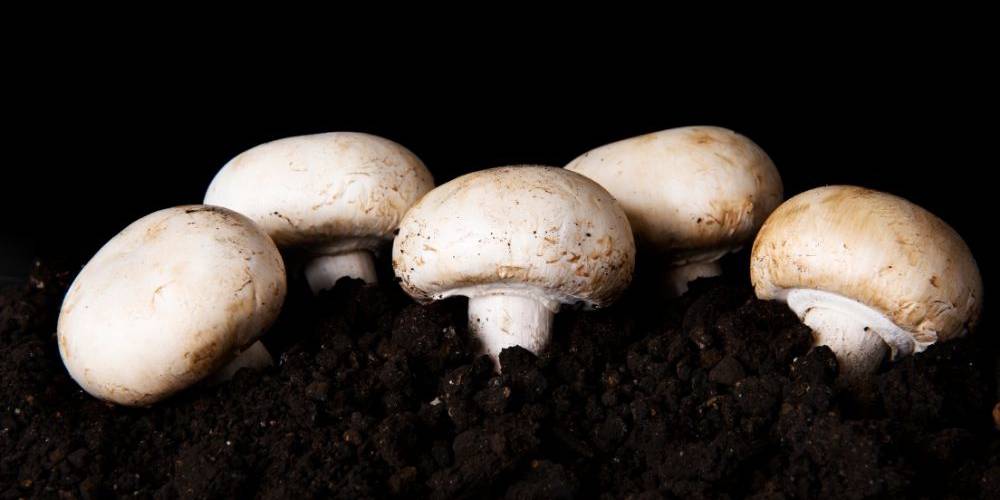Key Takeaways:
- The choice of substrate is crucial for maximizing mushroom yields, as it directly influences growth rates and fruiting potential.
- Understanding the unique requirements of different mushroom species helps in selecting the most effective substrate recipe.
- Mixing various ingredients like straw, manure, and coir can create nutrient-rich substrates that promote abundant harvests.
- Properly preparing and sterilizing substrates reduces contamination risks and enhances mushroom colonization.
- Experimenting with different substrate recipes can help you discover the best combination for high yields and healthy mushrooms.
Understanding the Importance of Substrate
Before diving into the recipes, it's important to understand why the substrate plays such a pivotal role in mushroom cultivation. The substrate provides the essential nutrients that mushrooms need to grow. It also acts as a support structure, holding moisture and giving the mycelium a place to spread and colonize. Different mushroom species have unique nutritional requirements, so the choice of substrate should match the species you are growing.
Mushrooms, unlike plants, do not require sunlight to grow. Instead, they rely on the substrate to provide all the nutrients and energy they need. This is why selecting the right substrate is key to achieving high yields. Factors such as pH levels, moisture content, and nutrient density all come into play when preparing the perfect growing medium.
Recipe 1: Straw-Based Substrate

One of the most popular and effective substrates for growing mushrooms is a straw-based mixture. Straw, particularly wheat or oat straw, is rich in lignin and cellulose, which are essential nutrients for many mushroom species. Straw is also readily available and easy to work with, making it a favorite among mushroom growers.
To prepare this substrate, start by chopping the straw into small pieces, about 1 to 2 inches long. This increases the surface area and makes it easier for the mycelium to colonize. Next, pasteurize the straw by soaking it in hot water (around 160-180°F) for about an hour. This step is crucial for killing off any competing organisms that could contaminate the substrate. Once pasteurized, drain the straw and allow it to cool before mixing it with mushroom spawn.
Straw-based substrates are particularly effective for growing species like Oyster mushrooms, which thrive on lignin-rich materials. The high lignin content in straw provides a steady release of nutrients, leading to robust mycelium growth and higher yields.
Recipe 2: Manure-Based Substrate

For those looking to cultivate button mushrooms, a manure-based substrate is an excellent choice. Manure, especially from horses or cows, is rich in nitrogen, which is essential for the growth of button mushrooms. When combined with other ingredients like straw or gypsum, manure can create a nutrient-dense environment that promotes rapid colonization and high yields.
To prepare this substrate, begin by mixing fresh or aged manure with chopped straw at a ratio of about 50:50. Add a small amount of gypsum to the mixture to help balance the pH and improve texture. After thoroughly mixing the ingredients, pasteurize the substrate by heating it to around 160°F for an hour. Once the substrate has cooled, it’s ready to be inoculated with mushroom spawn.
This recipe is particularly effective for growing button mushrooms because they thrive in nitrogen-rich environments. The combination of manure and straw provides a balanced nutrient profile that supports healthy mycelium development and results in bountiful harvests.
Recipe 3: Coir and Vermiculite Substrate

Coconut coir and vermiculite are a dynamic duo when it comes to creating a versatile and effective mushroom substrate. Coir, derived from the husk of coconuts, is a fibrous material that holds moisture well and resists contamination. Vermiculite, a mineral that expands when heated, provides aeration and helps retain moisture, creating a fluffy and light substrate that is ideal for many mushroom species.
To prepare this substrate, start by hydrating the coir. Place the coir in a large container and add hot water until it is fully saturated. Allow it to cool, then mix in an equal amount of vermiculite. The ratio of coir to vermiculite can be adjusted depending on the moisture needs of the mushrooms you are growing, but a 50:50 mix is a good starting point.
This substrate is particularly popular among growers of Psilocybe cubensis, a species that thrives in moist environments. The combination of coir and vermiculite creates a substrate that retains moisture without becoming waterlogged, providing an ideal environment for mycelium to flourish.
Recipe 4: Hardwood Sawdust Substrate

Hardwood sawdust is an excellent substrate for growing wood-loving mushroom species like Shiitake and Lion’s Mane. Sawdust provides a rich source of lignin and cellulose, which these mushrooms break down as they grow. Using hardwood sawdust, such as oak or maple, is ideal because it contains fewer resins and oils than softwood varieties, making it more suitable for mushroom cultivation.
To prepare this substrate, combine hardwood sawdust with a small amount of bran or wheat flour. The bran adds extra nutrients that help speed up colonization. Once mixed, the substrate needs to be sterilized rather than pasteurized, as wood-loving mushrooms are particularly sensitive to contamination. Sterilization can be achieved by placing the substrate in a pressure cooker and heating it at 15 PSI for about 90 minutes.
This recipe is ideal for those looking to grow gourmet mushrooms. Hardwood sawdust provides a steady release of nutrients, and when combined with the right environmental conditions, it can lead to high yields of flavorful mushrooms.
Recipe 5: Coffee Grounds and Coir Substrate

For a sustainable and eco-friendly approach to mushroom cultivation, consider using spent coffee grounds as part of your substrate. Coffee grounds are rich in nitrogen, making them an excellent addition to a coir-based substrate. This recipe is particularly effective for growing Oyster mushrooms, which are known for their ability to thrive on a wide variety of substrates.
To prepare this substrate, start by collecting fresh spent coffee grounds. It’s important to use grounds that have been used within the last 24 hours to reduce the risk of contamination. Mix the coffee grounds with hydrated coir at a ratio of about 50:50. This combination provides a nutrient-rich and moisture-retentive environment that is perfect for growing Oyster mushrooms.
Using coffee grounds as part of your substrate is not only cost-effective but also environmentally friendly. By repurposing waste materials, you can grow mushrooms while reducing your ecological footprint. The high nitrogen content in coffee grounds supports rapid mycelium growth, leading to impressive yields.
Tips for Preparing and Sterilizing Substrates
While the recipes above provide a solid foundation for mushroom cultivation, success also depends on how well you prepare and sterilize your substrates. Proper preparation is essential for creating an environment that supports healthy mycelium growth while minimizing the risk of contamination.
Start by thoroughly mixing your substrate ingredients to ensure even distribution of nutrients. Consistency is key—whether you’re using straw, manure, coir, or sawdust, make sure that all components are evenly incorporated.
Sterilization or pasteurization is the next critical step. Depending on the recipe, you’ll either need to pasteurize or sterilize your substrate. Pasteurization, which involves heating the substrate to a temperature that kills off harmful organisms but leaves beneficial microbes intact, is ideal for substrates like straw and manure. Sterilization, on the other hand, involves higher temperatures and is necessary for more complex substrates like hardwood sawdust.
After sterilizing or pasteurizing, allow the substrate to cool completely before inoculating it with mushroom spawn. Introducing spawn to a hot substrate can kill the mycelium, so patience is essential. Once the substrate is inoculated, it should be placed in a clean, controlled environment to encourage colonization.
Experimenting with Different Substrates
One of the exciting aspects of mushroom cultivation is the ability to experiment with different substrates to see what works best for your specific growing conditions. While the recipes provided are tried-and-true, there’s always room for innovation. Some growers, including those who use products from Magic spore labs, have found success by adding additional ingredients like gypsum, which helps improve texture and pH balance, or even using alternative materials like cardboard or paper.
Keep in mind that different mushroom species have different substrate preferences. For example, Oyster mushrooms are incredibly versatile and can grow on a wide range of substrates, while Shiitake mushrooms prefer hardwood sawdust. By understanding the needs of your chosen species, you can tailor your substrate recipe to maximize yields.
Another important factor to consider is moisture content. Mushrooms require a moist environment to thrive, but too much water can lead to problems like bacterial growth and contamination. When preparing your substrate, aim for a moisture level that feels damp to the touch but not soggy. You can test this by squeezing a handful of substrate—if water drips out, it’s too wet.
Finally, don’t be afraid to adjust your recipes based on your observations. If you notice that a particular substrate isn’t producing the yields you expect, try tweaking the ingredients or preparation methods. Mushroom cultivation is as much an art as it is a science, and finding the right combination of factors can lead to bountiful harvests.
Conclusion
Choosing the right substrate is one of the most important decisions you’ll make as a mushroom grower. Whether you’re cultivating for personal enjoyment or commercial production, the substrate you use will have a direct impact on your yields. By experimenting with different recipes and refining your techniques, you can discover the best methods for growing healthy, abundant mushrooms.
The five recipes outlined in this blog provide a solid foundation for success. From straw and manure to coir and coffee grounds, each substrate offers unique benefits that cater to different mushroom species. With proper preparation, sterilization, and a bit of experimentation, you’ll be well on your way to achieving high yields and enjoying the fruits of your labor.
FAQs
What is the best substrate for growing Oyster mushrooms?
The best substrate for growing Oyster mushrooms is a straw-based mixture. Straw provides the lignin and cellulose that Oyster mushrooms thrive on, making it an ideal choice for high yields.
Can I use coffee grounds as a substrate for mushrooms?
Yes, coffee grounds can be an excellent addition to a mushroom substrate, especially when combined with coir. The nitrogen-rich content of coffee grounds supports rapid mycelium growth, making it a popular choice for growing Oyster mushrooms.
How do I sterilize my mushroom substrate?
Sterilization involves heating the substrate to a high temperature, typically using a pressure cooker. This process kills off any harmful organisms, ensuring that your substrate is clean and ready for inoculation with mushroom spawn.



